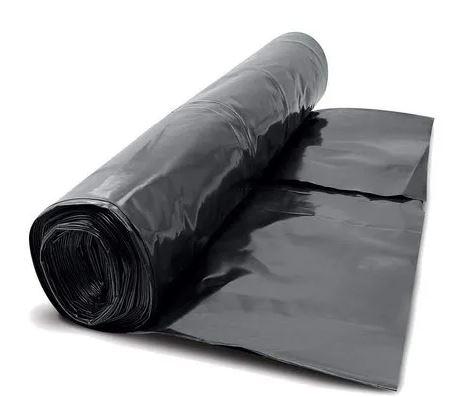In the vast landscape of civil engineering and environmental protection, Geomembrane Sheets stand as silent guardians, creating barriers that shield against a myriad of challenges. These synthetic membranes, typically made of high-density polyethylene (HDPE) or other polymers, play a crucial role in containment, prevention of seepage, and environmental protection. In this exploration, we delve into the world of Geomembrane Sheets, understanding their composition, applications, and the pivotal role they play in shaping a sustainable future.
The Composition of Resilience
High-Density Polyethylene (HDPE): The Foundation
Geomembrane Sheets find their strength in the composition of high-density polyethylene (HDPE). This robust polymer provides exceptional durability, resistance to chemicals, and a low permeability that makes it an ideal choice for applications demanding containment and environmental protection. The manufacturing process ensures a consistent thickness, creating a uniform barrier against potential threats.
Engineered for Excellence
The manufacturing of Geomembrane Sheets involves a meticulous process of extrusion, where the HDPE is transformed into sheets with consistent thickness and exceptional strength. The resulting material is not only mechanically robust but also possesses the flexibility needed to conform to the contours of the terrain.
Applications Across Industries
Water Containment in Civil Engineering
One of the primary applications of Geomembrane Sheets lies in water containment systems within civil engineering projects. Whether in reservoirs, ponds, or landfills, these sheets provide an impermeable barrier, preventing water seepage and ensuring the integrity of structures over time.
Waste Containment and Landfills
In waste management, Geomembrane Sheets play a pivotal role in containing and isolating hazardous materials. As a lining material in landfills, these sheets prevent the leaching of contaminants into the soil and groundwater, safeguarding the surrounding environment.
Protecting Aquaculture Ponds
Aquaculture benefits from the use of Geomembrane Sheets in pond lining. The impermeable barrier prevents water seepage, maintaining optimal water levels and creating a controlled environment for fish and aquatic life.
Environmental Remediation
In environmental remediation projects, Geomembrane Sheets are employed to isolate and contain contaminated soil. By creating a barrier, these sheets prevent the further spread of pollutants, allowing for targeted remediation efforts.
Environmental Sustainability
Mitigating Environmental Impact
Geomembrane Sheets contribute significantly to environmental sustainability. By preventing the migration of pollutants and contaminants, they aid in mitigating the environmental impact of various industrial activities. This aligns with global efforts to create a more sustainable and ecologically conscious future.
Longevity and Durability
The durability of Geomembrane Sheets ensures a long service life, reducing the need for frequent replacements. This longevity not only minimizes the environmental footprint associated with manufacturing but also enhances the overall cost-effectiveness of containment solutions.
Innovations on the Horizon
Advancements in Material Science
As technology advances, so does the potential for innovation in Geomembrane Sheets. Ongoing research in material science may lead to the development of enhanced polymers with even greater strength, flexibility, and environmental compatibility, opening new frontiers in containment technology.
Smart Technologies Integration
The future may witness the integration of smart technologies into Geomembrane Sheets. Sensors and monitoring devices embedded within the sheets could provide real-time data on the integrity of containment systems, allowing for proactive maintenance and early detection of potential issues.
Conclusion
Geomembrane Sheets stand as a testament to human ingenuity in creating solutions that address complex challenges in civil engineering and environmental protection. Their role in water containment, waste management, and environmental remediation showcases their versatility and importance in ensuring the sustainability of our infrastructure and ecosystems. As we navigate the complexities of tomorrow, Geomembrane Sheets continue to be at the forefront, engineering barriers against the challenges that lie ahead.
The Composition of Resilience
High-Density Polyethylene (HDPE): The Foundation
Geomembrane Sheets find their strength in the composition of high-density polyethylene (HDPE) sheets . This robust polymer provides exceptional durability, resistance to chemicals, and a low permeability that makes it an ideal choice for applications demanding containment and environmental protection. The manufacturing process ensures a consistent thickness, creating a uniform barrier against potential threats.
Engineered for Excellence
The manufacturing of Geomembrane Sheets involves a meticulous process of extrusion, where the HDPE is transformed into sheets with consistent thickness and exceptional strength. The resulting material is not only mechanically robust but also possesses the flexibility needed to conform to the contours of the terrain.
Applications Across Industries
Water Containment in Civil Engineering
One of the primary applications of Geomembrane Sheets lies in water containment systems within civil engineering projects. Whether in reservoirs, ponds, or landfills, these sheets provide an impermeable barrier, preventing water seepage and ensuring the integrity of structures over time.
Waste Containment and Landfills
In waste management, Geomembrane Sheets play a pivotal role in containing and isolating hazardous materials. As a lining material in landfills, these sheets prevent the leaching of contaminants into the soil and groundwater, safeguarding the surrounding environment.
Protecting Aquaculture Ponds
Aquaculture benefits from the use of Geomembrane Sheets in pond lining. The impermeable barrier prevents water seepage, maintaining optimal water levels and creating a controlled environment for fish and aquatic life.
Environmental Remediation
In environmental remediation projects, Geomembrane Sheets are employed to isolate and contain contaminated soil. By creating a barrier, these sheets prevent the further spread of pollutants, allowing for targeted remediation efforts.
Navigating Tomorrow’s Containment Solutions
In the ever-evolving landscape of civil engineering and environmental protection, Geomembrane Sheets are poised to play a central role in tomorrow’s containment solutions. As industries embrace sustainability and technology continues to advance, Geomembrane Sheets will remain at the forefront of creating resilient barriers that safeguard our environment and infrastructure. Join us on this journey into the future, where Geomembrane Sheets become integral components in building a sustainable and resilient world.
Conclusion
Geomembrane Sheets stand as a testament to human ingenuity in creating solutions that address complex challenges in civil engineering and environmental protection. Their role in water containment, waste management, and environmental remediation showcases their versatility and importance in ensuring the sustainability of our infrastructure and ecosystems. As we navigate the complexities of tomorrow, Geomembrane Sheets continue to be at the forefront, engineering barriers against the challenges that lie ahead.


